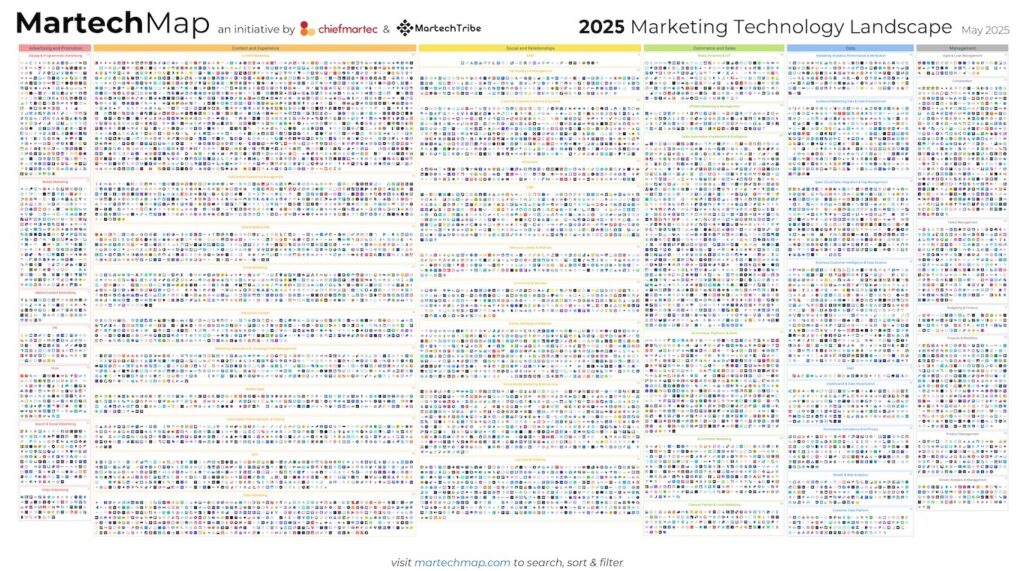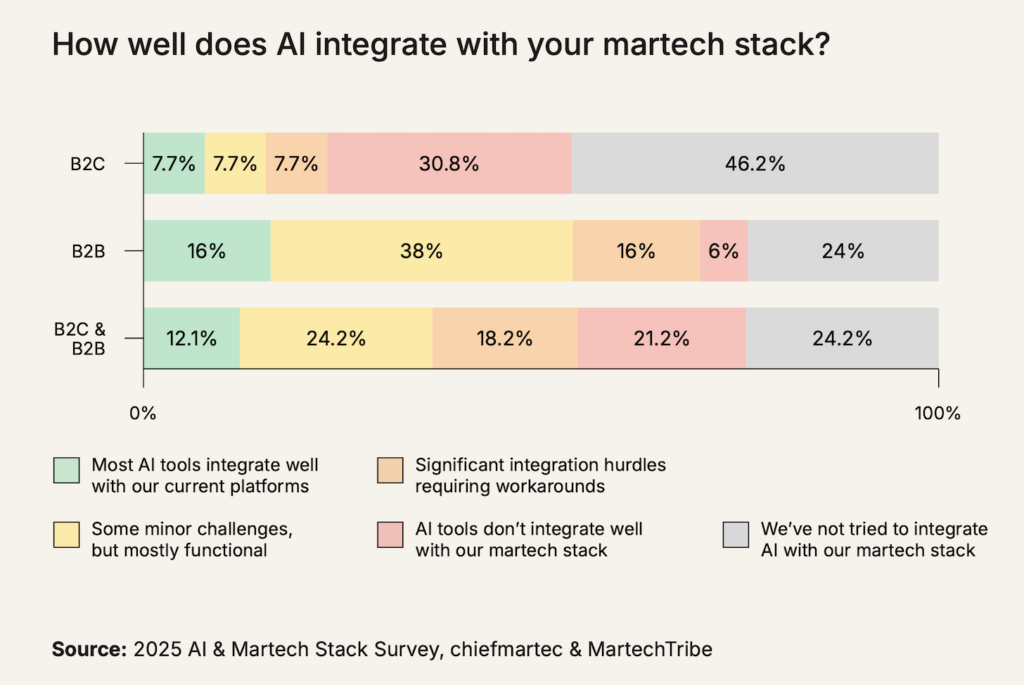
Are you feeling the vibes yet?
“Vibe” has become the latest AI buzzword. Even more than “agentic,” which is saying a lot. While both terms are widely open to interpretation — and therefore ripe to be appropriated by anyone selling anything — vibe stands out for sheer weirdness.
The term originated with a post by Andrej Karpathy, one of the original co-founders of OpenAI, who described vibe coding as a new way of rapidly building software by simply conversing with an LLM-powered coding assistant. “I just see stuff, say stuff, run stuff, and copy paste stuff, and it mostly works.”
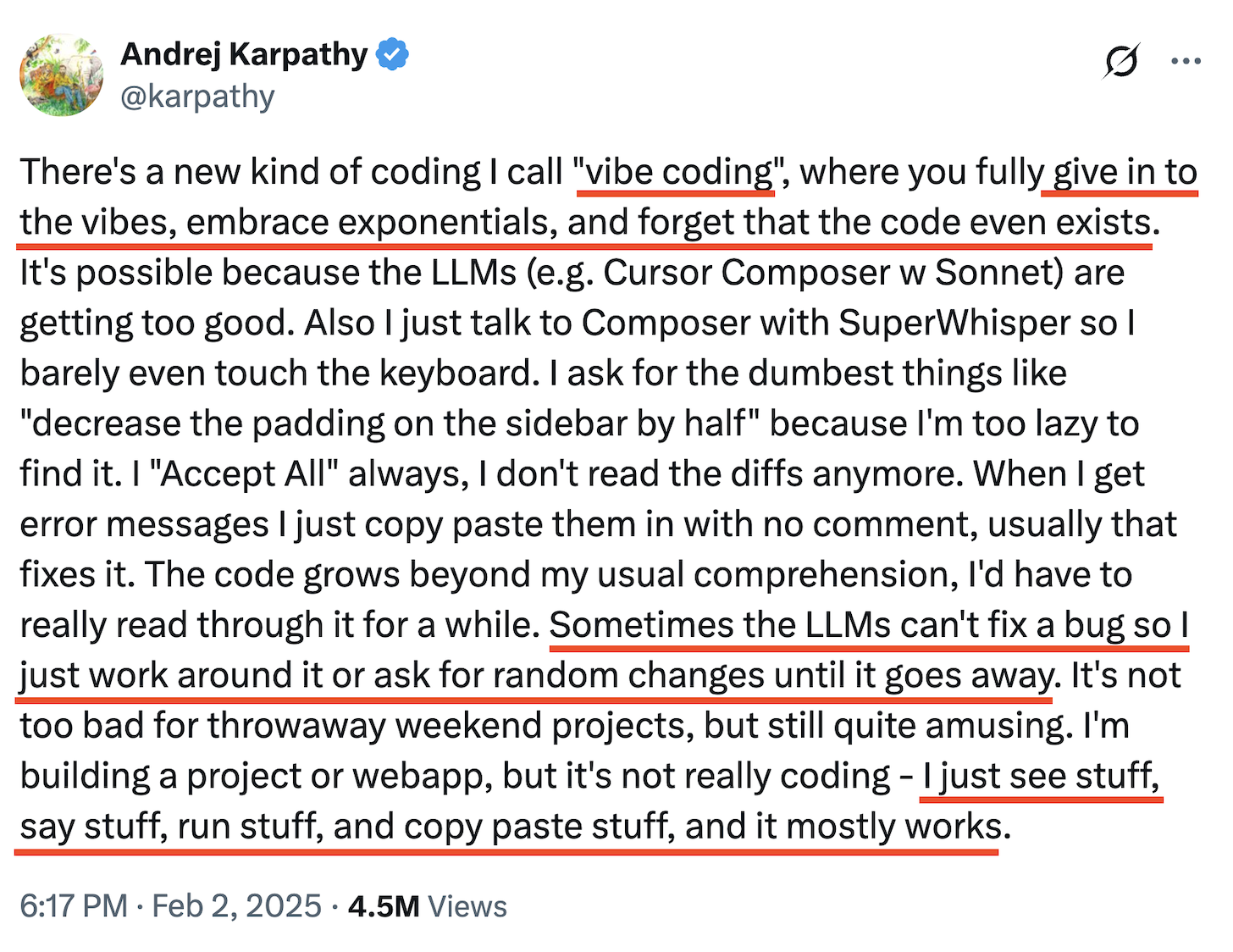
I think of this as the next generation of no-code/low-code development, now turbocharged with AI. Which, hey, is awesome. “Power to the people” as they said in the 60’s.
I’m sure the “it mostly works” caveat is triggering to some. Critics of no-code have long argued that people who don’t know how to code have no business building their own apps. Taking a “just work around it or ask for random changes until it goes away” approach to fixing bugs would horrify them.
Andrej, however, is a world-class computer scientist who certainly knows how to code. Yet here he is advocating to give in to the vibes, embrace exponentials, and forget that the code even exists.
(As an aside: is “vibe” language a bizarre mashup of 1960’s counterculture with 2020’s techno-optimism, or what? I’m not saying that recreational drugs are involved. But if there were gummies other than Haribo next to the keyboard, I wouldn’t be shocked either.)
In recent months, vibe coding has become all the rage.
Jason Lemkin of SaaStr recently got in on the vibes, diving into a 100+ hours of vibe coding an app with Replit as a non-engineer — albeit with mixed results. He shared his joys and frustrations as he went along in a series of LinkedIn posts.
Afterwards, he wrote a great post about what kinds of apps make sense to be vibe coded by non-engineers, from safe “green light” apps such as internal dashboards or personal workflows to here-be-dragons “red light” apps, such as trying to rebuild Salesforce from the ground up. (I’m not sure if even Salesforce would attempt to rebuild Salesforce from the ground up.)
I converted this into a visual continuum that I call the Lemkin Scale of Vibe Coding, ranging from 1 (viable vibing) to 10 (unviable vibing):

Don’t read too much precision in this scale. It’s just a loose way to approximate the level of challenge a non-engineer would face in trying to vibe code a particular app. Comparable to when the doctor asks how much pain you’re feeling, on a scale of 1-10. (“Depends, doc. Ask me again after I see how much my insurance actually covers.”)
Of course, the examples along this spectrum are only a snapshot of what’s easy or hard today. As these AI tools continue to improve at an impressive clip, we can expect more advanced app building to “shift left” to the green side of the scale over time. What’s a “7” today might be a “3” in a year from now.
“Vibe Marketing” was inevitable, but what is it?
With vibe coding sweeping social media and garnering so much attention and love — the startup to achieve the fastest growth to $100 million ARR, in just 8 months since November 2024, is a vibe coding platform literally called Lovable — it didn’t take long for marketers to jump on the bandwagon with “vibe marketing.”
I think Greg Isenberg gets credit as the first person to coin the phrase.
But what exactly is vibe marketing? Or what should it be?
Greg framed vibe marketing as a combination of vibe coding with AI agents and workflows that empowers individual marketers to achieve things that previously would have required a whole team of specialists. They can move faster and ship more ideas at a fraction of the cost. They can easily build or customize tools and systems tailored to their specific needs. Vibe marketers are übermarketers. (Even if they don’t work at Uber.)
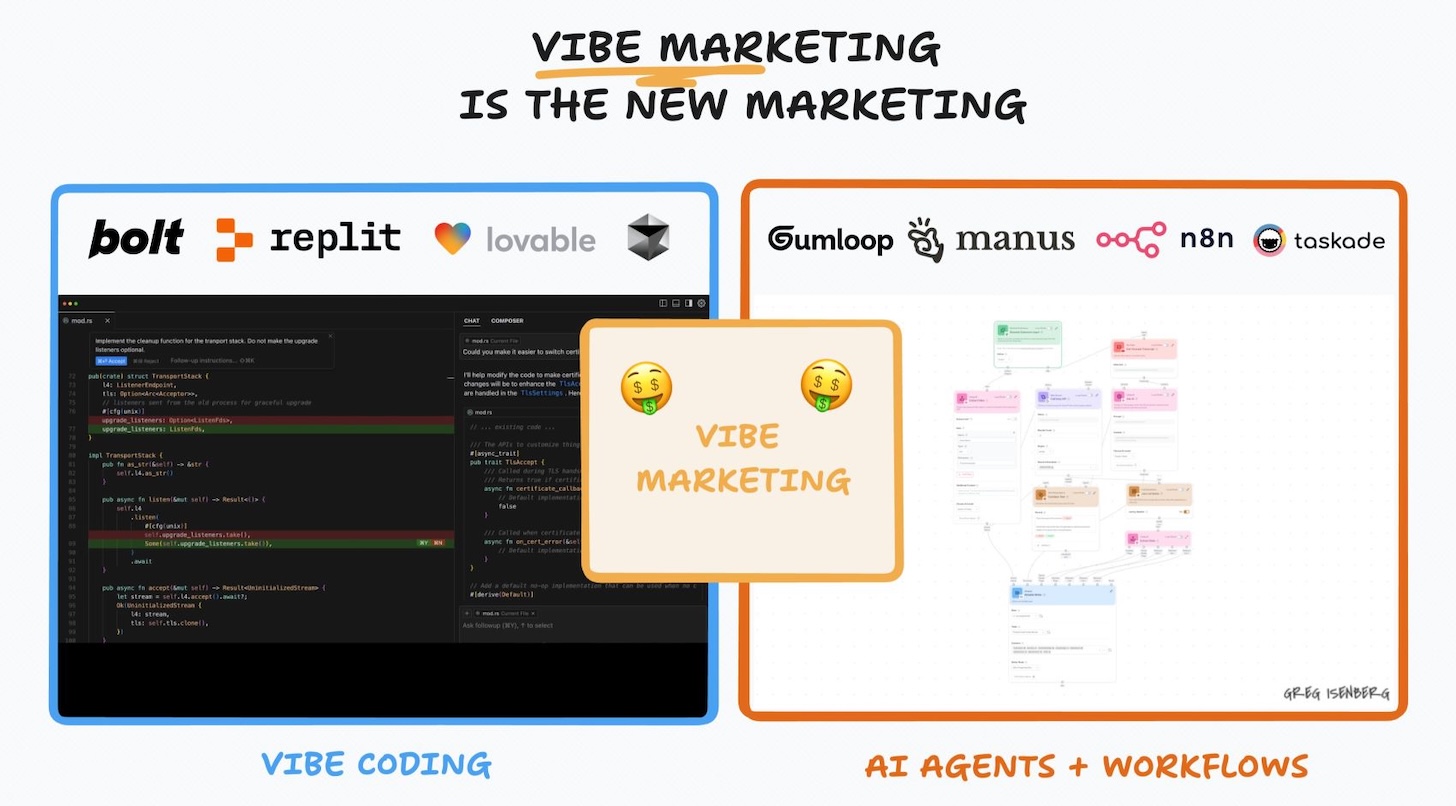
(As an aside, this is kind of a cliché marketing move: if “vibe” is cool, and “agentic” is cool, then something that is both vibe and agentic has to be even more cool, right?)
If vibe coding is the next generation of no-code/low-code, this definition of vibe marketing seems like the next generation of growth hacking. Which, hey, is also awesome. Some folks are calling this the work of GTM engineers. (A marketing technologist by any other name would smell as sweet. Um, metaphorically speaking.)
But as enthusiastic as I am for marketers and marketing operations pros to be imbued with these AI superpowers, I feel like this framing misses the spirit of what vibe marketing really should be about. Production agents, apps, and automations don’t seem vibe-y to me. They seem more like your marketing operating system. You want it to be fluid and adaptable. But you also want it to be structured, reliable, and well-governed.
My interpretation is that Andrej’s good vibrations with vibe coding came from the freedom to think less about code and more about indulging one’s imagination to bring new ideas to life, even as imperfect prototypes. The “vibe” is human creativity unleashed.
That is the vibe that marketers should embrace.
Better yet, marketers should be the “market whisperers” and “customer whisperers” who seek to tune into the vibes of their audience. If vibe coding delights developers — they’re the ones feeling the vibes — vibe marketing should focus on delighting customers.
Auomated content generation. Automated outbound emails. Automated data scraping. Don’t get me wrong, these are all useful AI-powered capabilities that marketers can and probably should implement in their operating system. But the mechanics of this aren’t the vibe. The real question is how prospects on the receiving end of that machinery feel about it. Are they humming The Beach Boys’ Good Vibrations or Monty Python’s Spam, Spam, Spam?
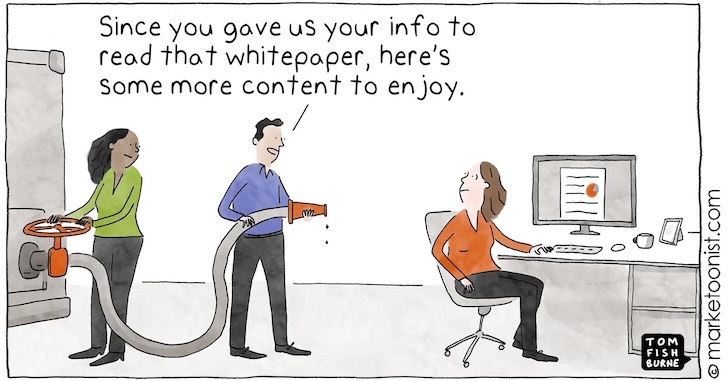
To me, vibe marketing should be about experimentation.
Curious about a customer pattern? Use AI to mine your data lakes and warehouses for answers that previously would have required an analyst or data scientist — a high enough barrier that the vast majority of questions that popped into one’s head weren’t worth pursuing. But now? Let those “I wonder…” curiosity vibes flow.
Those answers lead you to a hypothesis? Compose a micro-campaign, using AI to develop the creative — which can be more ambitious app-like, multimodal, or dynamic concepts than were ever previously in reach for an individual marketer to whip up solo — segment a test population, deploy, monitor, and measure against your hypothesis. Most experiments should be quick, cheap, and low-risk. Iterate the promising ideas. Scale the proven ones. Jettison the duds.
Which experiments vibe with your audience? Those get promoted from vibe-land to a more polished production plateau.
If Big Data was about harnessing the volume, velocity, and variety of data, vibe marketing is Big Experimentation — harnessing the volume, velcoity, and variety of marketing experiments to out-innovate your competition.
Yes, there need to be guardrails. Proper permission management for data. Compliant respect for customer privacy and preferences. Adherence to brand standards. But this is increasingly manageable with professional AI martech tools. One of the greatest contributions marketing operations teams can make in this environment is setting up the scaffolding and safety nets for the rest of the marketing team to vibe more ideas to life.

Will the “vibe” language endure past this 2025 Summer of Vibes? Probably not. It’s a little hokey. But the creative power of Big Experimentation unleashed by a new generation of AI-empowered marketers is only going to grow — whatever label we stick on it.
For now though, enjoy the Good Vibrations of summer.
